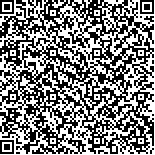下载中心
优秀审稿专家
优秀论文
相关链接
摘要

及时准确地获取城市建筑区域的空间分布及其变化信息对于城市规划、空间地理数据库建设及区域社会经济分析具有重要意义。本文提出一种基于多尺度Gabor变换和感知聚类方法即张量投票 TV(Tensor Voting)相结合的自适应局部几何不变特征检测方法,并将其应用于高空间分辨率遥感影像建筑区域提取。首先,考虑到高分辨率遥感影像复杂的几何结构特征,使用Gabor滤波器组对影像进行多尺度多方向变换检测奇异性特征。然后,在感知聚类框架下,根据张量投票理论将不同方向子带系数位置编码为相应的二阶对称方向张量,为了突出影像几何特征,对不同尺度、不同方向子带中任意像素位置方向张量使用滤波器响应系数加权并求和完成多尺度特征融合。再次,对张量特征分解得到点结构与线结构显著性图并使用非极大抑制提取相应角点和曲线等局部几何特征,同时生成约束准则筛选角点以确定建筑物坐标。最后,利用概率密度估计结合局部角点特征生成全局概率密度场描述影像中像素从属于建筑目标的概率,并使用最大类间方差法(Otsu)阈值分割自动提取居民地多边形区域。使用分辨率分别为0.49 m、0.98 m的Google Earth及0.8 m的高分二号等影像数据集进行实验,实验结果表明本文方法相对于已有的Harris和HSCD点检测算法,在建筑区域提取质量上(Quality)上分别提高了4.79%,5.96%;1.47%,3.76%和1.91%,4.08%。
Based on characteristic of High Spatial Resolution (HSR) image, an adaptive local geometric invariant feature extraction method based on Gabor transform and Tensor Voting (TV) is proposed and applied to building area extraction from HSR remote sensing images. First, image geometric features are analyzed. Second, the feasibility of extracting built-up area using local feature points and probability density estimation are determined. This study provides specific methods and steps. First, considering the abundant geometric features of high spatial resolution remote sensing images, multi-scale and multi-direction Gabor filter banks are adopted in detecting the singularity of images contain building area. In order to extract edge information of buildings, only real part Gabor coefficients are used. Meanwhile, we also measured the influence of Gabor kernels of different size on geometric feature extraction experiments, and the optimal scale parameter intervals for geometric feature extraction of remote sensing images with different spatial resolutions are thus determined. Second, it is a fact that the response of Gabor filter at each pixel is a measure for orientation certainty, thus, we introduce the orientation tensor which represents an ideal direction in the direction of the unit vector perpendicular to frequency. By weighting the orientation tensor with Gabor coefficients ans summing over it to complete the information fusion, the resulting tensor givens an estimate for local orientation and orientation uncertainty at image position. The tensors are then used as an initial estimate for global context refinement using tensor voting and the points are classified based on the their likelihoods of being part of a feature type, non-maximal suppression is used to extract geometric features. A key advantage of combining the Gabor filtering and tensor voting is that it eliminates the need for any thresholds therefore removing any data dependencies. In order to achieve a reliable extraction of local invariant feature such as corners from built-up area, three criterions are further proposed to refine the first stage result. Finally, each local building corner indicates a building be detected in image. However, only one of them is not sufficient alone to detecting a building. In fact, the more local points a buildings has, the more probable its detection becomes. Based on that fact, a probability density estimate method is generated to describe the probability that the pixel belongs to the building area, and the Otsu method is used to automatically extract the polygon area of the residential area. Experiments were carried out using image data sets such as Google and GF-2 with resolution higher than 1 meter, results showing that the proposed method can achieve higher accuracy in building area detection compared with the state-of-the-art corner detection algorithm such as Harris corner and High-speed corner detect method.

